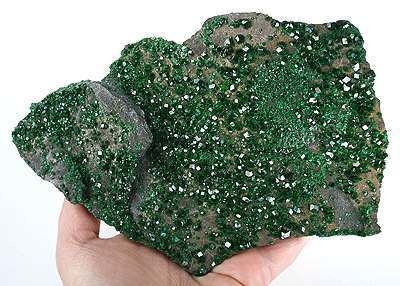 | ||
In geology, druse refers to a coating of fine crystals on a rock fracture surface, vein or within a vug or geode.
Druse occurs worldwide; the most common is perhaps quartz druse within voids in chert or agates. Garnet, calcite, dolomite and a variety of minerals may occur as druse coatings.
Generally, it is possible to find drusy natural gemstones in any location in which there is a place for water to collect and evaporate on rock. It most often appears along river beds and shorelines. It therefore is helpful for collectors, whether commercial or otherwise, to be aware of the minerals common to an area when they look for a particular type of druse.
In jewelry
Because of its sparkling appearance, druse is sometimes used in jewelry making. Both the glittering effect of the tiny crystals and the color of the base mineral are factors when selecting druse for this purpose.
Druse, also known as drusy or druzy, is used with a variety of natural gemstones including agate, crystallline quartz and many more. Druse can be colored by electroplating, a process similar to rhodium application, giving the stone a fancy look, and a brighter appearance than is natural.
